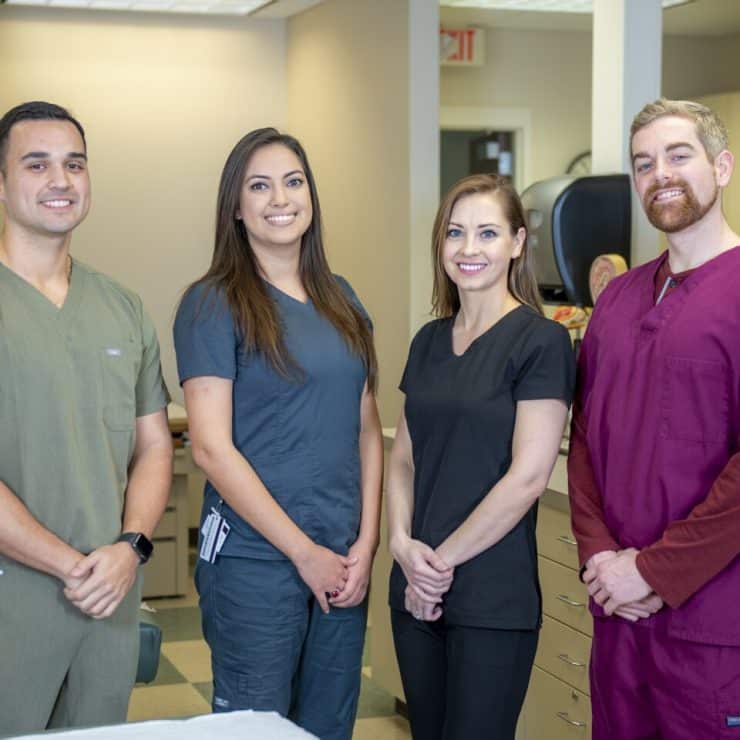
In 1996, local physician assistant Ron Foster approached then MU President Dr. M. Elton Hendricks with an idea that would grow into a successful Physician Assistant program. Twenty-five years later, the program has graduated hundreds of PAs, 70 percent of whom have stayed in the Sandhills region to serve the local population.
In 1996, local physician assistant Ron Foster approached then MU President Dr. M. Elton Hendricks with an idea that would grow into a successful Physician Assistant program.
Twenty-five years later, the program has graduated hundreds of PAs, 70 percent of whom have stayed in the Sandhills region to serve the local population.
“We needed PAs in this area,” said Foster. “I thought it was extremely important that we had in this particular area an institution that would serve those needs and would entice people to practice in this area once they graduate.”
“The PA program has made a tremendous impact on the care of our community,” added Dr. Christopher Aul, who serves as the program’s medical director and is affiliated with the local Cape Fear Valley Health system. “Within the Cape Fear Valley Health system, we have several hundred physician assistants, and more than 47 percent of them are MU graduates.”
The PA program at Methodist University had humble beginnings, receiving just a handful of applications in its early years. Now, the program receives more than 1,000 applications each year for just 40 seats.
“It’s impressed me that we attract students from all over the United States, and that’s a real statement of the quality of the program. I know we have way more applicants than we can possibly accept, which means the applicants we accept are the best of the best,” said Dr. Stanley Wearden, president of Methodist University. “Having a PA program with that kind of outstanding national reputation really speaks well for Methodist University.”
This highly selective program not only chooses academically qualified students to continue their education in health care at MU, but it also chooses students who demonstrate care and compassion and a true spark for helping others.
Only one out of 10 applicants are selected for an in-person interview. One of these was Gloria Kubuanu ’22, who said she felt right at home when touring the facilities before her interview.
“The faculty is amazing and super supportive,” she said. “The small class sizes stood out to me. We have a cohort of 40 students, and I love that small classroom feeling. Not only am I getting close with the faculty members, but I’m also getting closer to my classmates. I consider them a second family.”
Kubuanu said that her connection with faculty, staff and her fellow students allows her to feel supported as she navigates rigorous courses in the program. Top-tier facilities, such as the Human Anatomy Lab, assist students in the successful completion of the program.
While many other colleges and universities are switching to digital labs, MU’s PA Program allows students to apply their knowledge using cadavers, which aids in their learning practices.
“We prepare our students in an excellent way for what they’re going to encounter,” said Dr. Christina Perry, director of the PA Program. “Our graduates receive a lot of on-the-job training afterwards, as well.”
The coursework, clinical rotations, and ability to learn from former and practicing PAs has resulted in an average first-time MU PANCE pass rate of 98 percent in the past five years (exceeding the national average).
Perry said she is looking forward to many more years of success for the program and recognizes that, as time goes on, it is the faculty, staff and students who are making the program stronger year after year.
“I hope that we maintain that family atmosphere that makes us what we are,” said Perry. “That is our secret sauce. That is what makes us, us. We are going reap the benefits of the diverse cohort we have attracted, and we’re going to see our local health care force change and grow.”
Hopeful health care providers with a passion for helping others can apply to the program, or find more information, by visiting the PA Program Web site. To learn more about the history of the program, watch the video linked below.